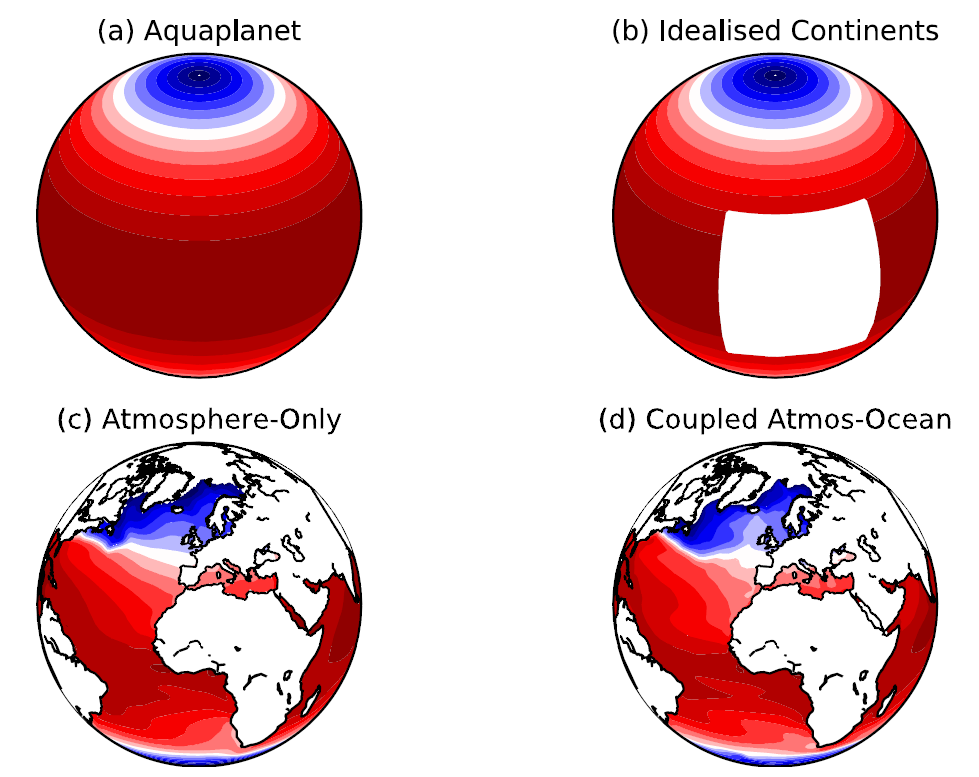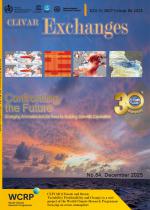Challenges and Opportunities for Improved Understanding of Regional Climate Dynamics

Figure: The ‘hierarchy of models’. Configurations may range from a simple aquaplanet design with either fixed SSTs or a simple mixed-layer ocean (a), through simplified continental configurations (b), atmosphere only (c) and coupled atmosphere–ocean configurations (d). Coupling allows for a better representation of how the atmosphere and ocean interact but may also result in biases in models, as can be seen in differences in the shaded SST field in the bottom left (from observations) and bottom right (HadGEM2-AO coupled model).
Dynamical processes in the atmosphere and ocean are central to determining the large-scale drivers of regional climate change, yet their predictive understanding is poor. Earlier this year, the CLIVAR Climate Dynamics Panel published a perspectives piece in Nature Climate Change highlighting challenges and opportunities in this area (Collins et al., 2018).
Three frontline challenges in climate dynamics were identified, each in which significant progress can be made to inform adaptation. These challenges are the response of storms, blocks and jet streams to external forcing; basin-to-basin and tropical-extratropical teleconnections; and the development of non-linear predictive theory. All involve dynamical processes in the atmosphere that are mediated by interaction with the ocean.
The opportunities and techniques for making immediate progress in these areas, were identified as (i) the development of high-resolution coupled model simulations, (ii) partial coupling or pacemaker experiments, and (iii) the development and use of dynamical metrics and exploitation of hierarchies of models (see figure).
The CLIVAR Climate Dynamics Panel will continue to promote these challenges and techniques through organisation of workshops, conferences sessions and in further publications.
Summary written by Mat Collins.











Add new comment